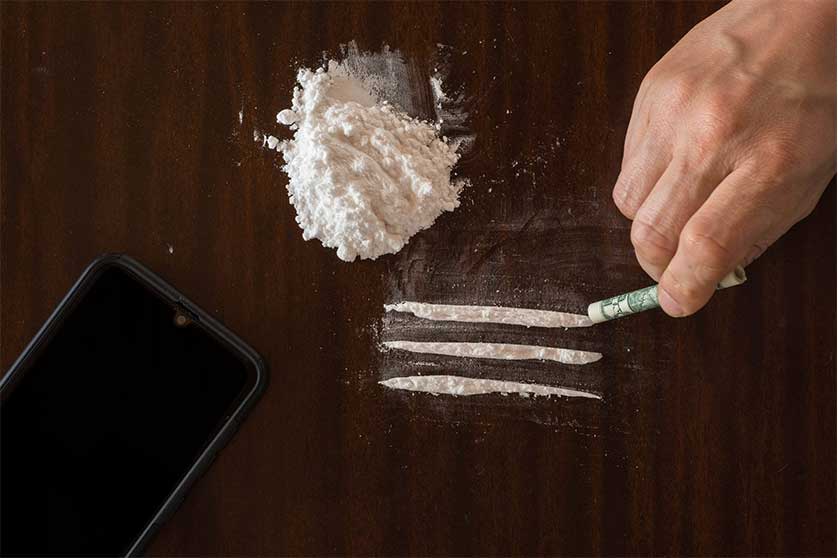Snorting Oxycodone | The Dangers Of Oxycodone Insufflation

Medically Reviewed By: Manish Mishra, MBBS

Oxycodone is a strong, semi-synthetic opioid/opiate featured in well-known brand-name medications like OxyContin, Percodan, and Percocet.
Available in both immediate release and extended-release formulations, oxycodone is commonly used to help manage moderate to severe pain, including chronic pain.
However, oxycodone is also a frequent target for prescription opioid abuse, with the medication sometimes tampered with and snorted in order to increase the speed and potency of its effects.
Effects Of Snorting Oxycodone
When prescription painkillers are inhaled through nasal passages, often using a straw or rolled up dollar bill, a high dose of the drug is delivered to the bloodstream with rapid and potentially intense euphoric effects.
This high, characterized by drowsiness and sedation, will be felt almost immediately, though it won’t last as long as it would if the drug was taken orally. Snorting oxycodone may also injure the sinus tissues, which can lead to short- and long-term side effects and complications.
Dangers Of Snorting Oxycodone
Tampering with oxycodone through snorting can cause severe sinus damage while also increasing your risk of overdose, sinus injury, dependence, and drug addiction.
Sinus Injury
Depending on the form of oxycodone used, the medication may include a significant quantity of filler material. And in either case, oxycodone tablets are simply not formulated for nasal use.
This powder can cause severe scraping and cutting inside your nose, causing lasting damage to delicate bodily tissues.
Long-term, these injuries can lead to:
- sinus infections
- frequent nosebleeds
- loss of your sense of smell
- changes in your vocal quality
- changes to your facial appearance
- difficulty speaking
Chronic drug use via snorting can even cause perforations, or holes, to develop in your septum (the tissue between your nostrils) or palate (the tissue in the rear or top of your mouth).
Opioid Overdose
Oxycodone tablets are designed to release the medication safely inside your digestive system, where it can be absorbed at a controlled rate.
Modifying these tablets and dumping the full dose of the medication into the bloodstream increases the risk of overdose, which can be fatal or cause lasting physical or mental harm.
Signs and symptoms of oxycodone overdose may include:
- blue-tinted fingers or lips
- pinpoint/constricted pupils
- respiratory depression (gasping or slowed, shallow, or stopped breathing)
- cold and clammy skin
- low blood pressure
- low body temperature
- weak or slow heart rate
- seizures
- nausea and vomiting
- unresponsiveness or coma
Opioid overdoses are especially likely and dangerous when the drug is taken with another central nervous system depressant (alcohol, benzodiazepines, etc.), or with a central nervous system stimulant (methamphetamine, cocaine, amphetamines).
Oxycodone Dependence & Addiction
When used properly, oxycodone is a relatively safe option for pain relief. However, prolonged use of the drug will likely result in the development of physical dependence and drug tolerance.
Oxycodone abuse can accelerate and intensify this process, ultimately leading to opioid addiction and behavioral health effects, including:
- uncomfortable withdrawal symptoms when you stop taking the drug
- drug-seeking behavior (doctor shopping, frequent ER visits, theft)
- oxycodone cravings and intrusive thoughts
- high risk oxycodone use, including driving under the influence or mixing drugs
- mental health effects (anxiety, depression, mood swings)
- isolation from friends and loved ones
- being unable to stop taking oxycodone even if you try to
- trouble with the law, your finances, or your relationships
Oxycodone Addiction Treatment
If you or your loved one struggle with chronic oxycodone misuse, it is important that you get the help that you need through a professional oxycodone addiction treatment program.
Common treatment options that may be recommended as a part of your individualized treatment plan include:
- medical detox services
- medication-assisted treatment (MAT) with methadone, buprenorphine, or naltrexone
- dual diagnosis care for concurrent mental health disorders
- individual or group counseling
- behavioral therapy
- peer support groups
- alternative therapies
- aftercare support
For information on our inpatient treatment center, please contact Ohio Recovery Center today.
- Centers for Disease Control and Prevention (CDC) — Opioid Overdose https://www.cdc.gov/drugoverdose/opioids/prescribed.html
- Mayo Clinic — Prescription Drug Abuse https://www.mayoclinic.org/diseases-conditions/prescription-drug-abuse/symptoms-causes/syc-20376813
- National Institute on Drug Abuse (NIDA) — Prescription Opioids DrugFacts https://www.drugabuse.gov/publications/drugfacts/prescription-opioids
- National Library of Medicine: MedlinePlus — Oxycodone https://medlineplus.gov/druginfo/meds/a682132.html

